Grumman JRF 5 Goose
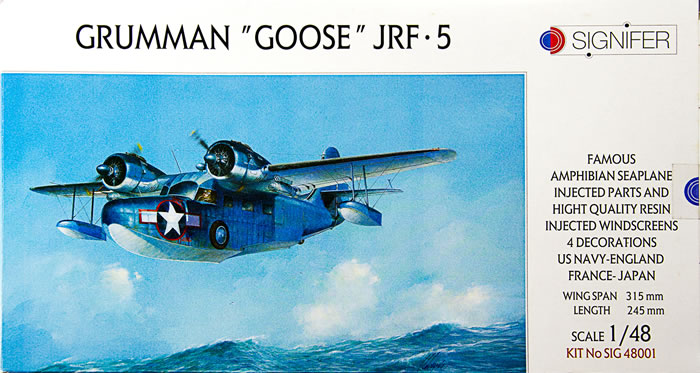
Signifer, 1/48 scale
| S u m m a r y : |
Catalogue Number: |
Signifer Kit No. 48001- Grumman JRF 5 Goose |
Scale: |
1/48 |
Contents and Media: |
Multi-media kit. Grey injection moulded plastic; interior parts, engine, wheel, undercarriage and interior detail moulded in resin, choice of clear plastic and vac formed canopy parts; markings for four aircraft. |
Price: |
37 Euro (32 Euro outside of France) plus shipping available online from Signifer's website
and specialist hobby retailers worldwide |
Review Type: |
First Look |
Advantages: |
High level of detail; crisp recessed panel line detail and riveting; extensive options including ability to model exposed engine and interior detail; separate resin control surfaces. |
Disadvantages: |
Short run multi-media kit. Some experience building similar kits will be an advantage. |
Conclusion: |
Signifer’s 1/48 Goose appears accurate, features nice surface textures, including a beautifully restrained mix of engraved and raised surface detail, and detailed resin components. With care and careful test fitting, the Signifer JRF 5 should build to an excellent replica of Grumman’s iconic Goose.
Highly Recommended. |
Reviewed by
David Harmer

Eduard's 1/48 scale Roland C.II Weekend Edition
is available online from Squadron.com for only $17.96!
The Grumman JRF 5 is a military variant of the G-21 Goose, which was originally designed by Grumman to serve as an amphibious eight-seat "commuter" aircraft.
The Goose was Grumman’s first monoplane to fly, its first twin-engined aircraft, and its first aircraft to enter commercial airline service. During World War II, the Goose proved an effective transport for the US military (including the United States Coast Guard), as well as serving with many other air forces.
During hostilities, the Goose performed a range of combat and training roles. The adaptable transport continued in postwar use. The Grumman Model G-21 was designed as a light amphibian transport.
Grumman’s typically rugged engineering produced a high-wing monoplane of almost all-metal construction—the trailing half of the main wing and all of the flight control surfaces except for the flaps were fabric-covered. It was powered by two 450 horsepower (340 kW) Pratt & Whitney R-985 Wasp Junior nine-cylinder, air-cooled, radial engines mounted on the leading edges of the wings. The deep fuselage served also as a hull and was equipped with hand-cranked retractable landing gear.
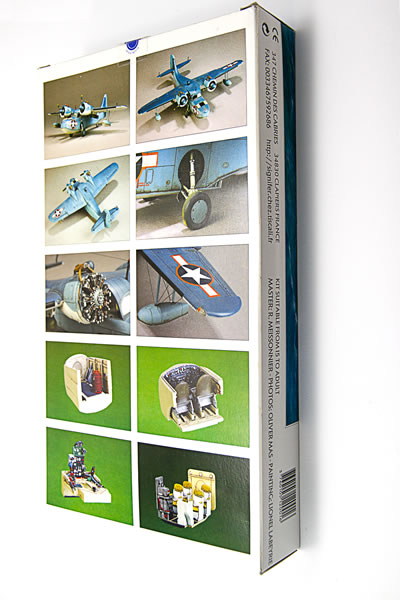
First flight of the prototype took place on May 29, 1937. As well as being marketed to small air carriers, the G-21 was also promoted as a military transport. In 1938, the U.S. Army Air Corps purchased the type as the OA-9 (later, in the war years, examples impressed from civilian ownership were designated the OA-13A).
The most numerous of the military versions were the United States Navy variants, designated the JRF. The amphibian was soon adopted by the Coast Guard and, during World War II, it also served with the RCAF in the transport, reconnaissance, rescue and training roles. The G.21 was used for air-sea rescue duties by the Royal Air Force (RAF).
The RAF, in a common naming convention with all of its aircraft, designated the type as "Goose."
On returning to civilian service, after the war, the Goose found continued commercial use in locations from the wilderness of Alaska to the sunny climes of Catalina and the Caribbean.
A total of 345 were built, with about 30 known to still be airworthy today (although approximately 60 are still on various civil registries, many of them are known to have crashed or been otherwise destroyed), most being in private ownership, some of them operating in modified forms.*
The Goose in 1/48 scale
Signifer is one of four manufacturers who offer a Goose in this scale. Czech Models, Encore Models and Lindberg have also released 1/48 kits (I understand the Encore Models Goose is the Czech Models kit re-boxed). The elderly Lindberg kit may have reached its use-by date, but is still readily available for those looking to build entirely in plastic. Over-scale raised rivet detail, crude interior and engine detail and some questionable shapes are all issues you may need to address when building this kit.
Brett reviewed the Czech Models Goose in 2004. You can read his review of this impressive multi-media kit here
The Signifer and Czech Models kits are similar in many respects and, with care, will both build to an accurate Goose. However, Signifer makes far more extensive use of resin to pack its Goose with detail and would be my choice of the two kits having studied both.
As a kid, I loved the Grumman Goose and Widgeon aircraft operated by Sea Bee Air from Mechanics Bay in Auckland (New Zealand) and was a big fan of “Cutter’s Goose” from the TV Show Tales of the Gold Monkey which screened in the early 80s. I have built the Classic Airframes Widgeon and have been waiting for an opportunity to build a great Goose, so admit to being more than a little bit excited at the chance to review Signifer’s kit.
I wasn’t disappointed.
The kit is comprised of two large sprues that contain the fuselage parts and main wing, a small clear parts sprue for the front windscreen, and resin for the outboard floats, engines, moveable control surfaces and extensively detailed interior.
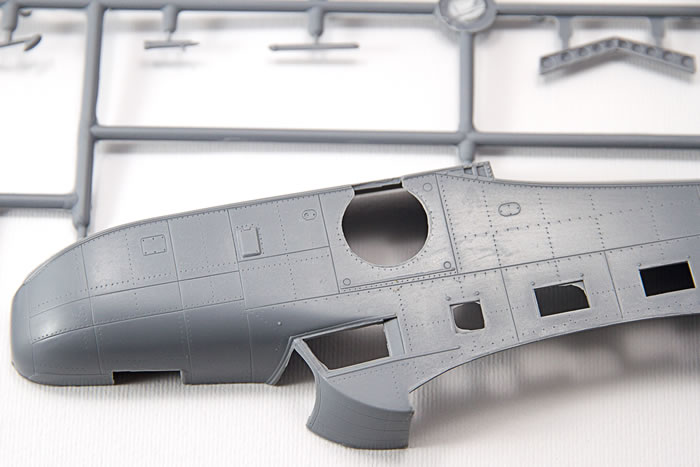
For those who prefer it to the injection moulded part, Signifer have thoughtfully included a vac-formed front windscreen. Pre-cut clear acetate parts are provided for the fuselage windows. A word of caution here: in the review sample, many of these parts were floating loose in a sealed zip-lock bag having fallen from their acetate sheet. Take extra care when removing your clear parts to make sure the acetate window parts aren’t lost.
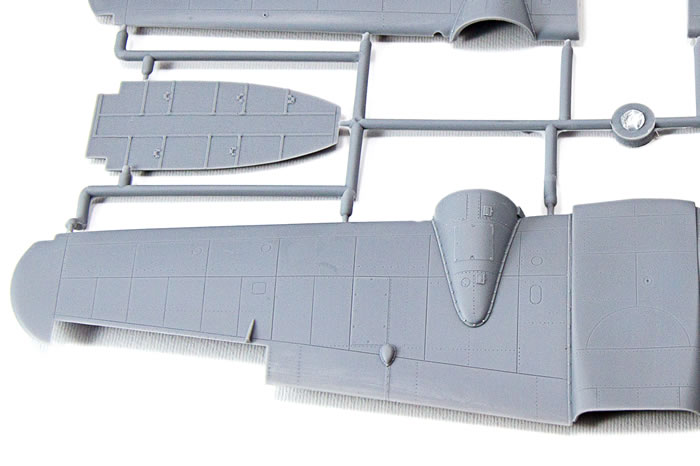
At first glance, casting the outboard floats in resin seemed like a high-risk proposition, particularly given their delicate position under the wings and the need to rig them before the model can be completed. However, closer inspection reveals the struts supporting the floats and seemingly fragile landing gear parts are reinforced with wire. Brilliant!
Moulding of both the plastic and resin parts is excellent but, typically of many short run kits, lacks positive location tabs or pins. The plastic parts feature a mix of restrained engraved detail, including both fine panel lines and rivet detail. Raised detail is also included where necessary to represent various plates, particularly on the upper wing and around the engine nacelles. Curiously, rivet detail is engraved on the fuselage parts but raised on the wings, however, I don’t think this will detract from the model as the detail is so fine. My side-by-side comparison of the Signifer and Czech Models wing and fuselage parts suggests the Signifer kit has a clear edge here, offering raised and engraved detail simply not included by Czech Models.
Separate control surfaces are provided in resin, and these look great. Fabric texture is convincingly replicated where appropriate and will offer excellent weathering opportunities for those keen to accentuate rib and other details.
Interior details and engines are provided in resin, a whole lot of gloriously detailed resin. This is perhaps the most exciting and intimidating aspect of this kit. It is clear that to make the most of this build, it will be necessary to carefully prepare, paint and fit the resin cockpit parts, bulkheads and passenger seats. This this will take time and a lot of careful test fitting.

That said, if working with and painting resin parts is a particular strength of yours, Signifer’s resin interior will make for a superb canvas, taking the opportunity to open various access doors should ensure your work here is visible.
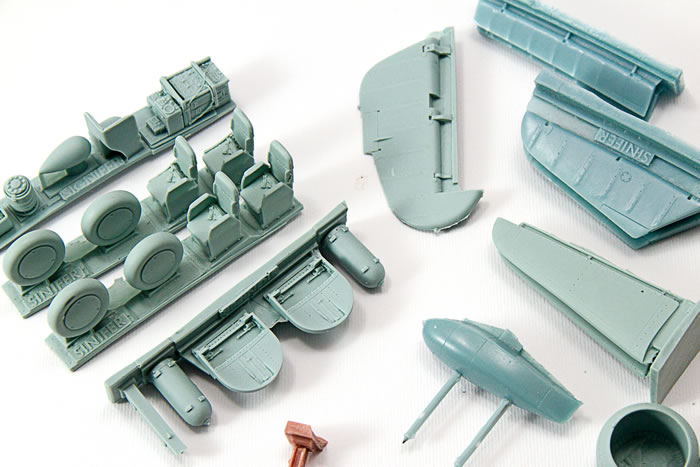
Two great builds featured here on Hyperscale illustrate what can be achieved with this kit and are recommended reading. Both author’s agree this is not a simple kit but demonstrate that, with care, an excellent result can be achieved:
The instructions are laid out over 6 pages in a reasonably clear way. I say “reasonably clear” as they lack the precision you expect to see from a mainstream manufacturer such as Tamiya, particularly about the specific location of parts. As a consequence, I suspect the lack of positive location tabs and less than exact location instructions will demand careful attention and lots of test-fitting to ensure all fits well.
Marking Options
Four marking options are offered – the decal sheet provides markings for French, USN, RAF and Japanese aircraft. Unfortunately the instructions provide only the most basic of marking diagrams and no detail about which aircraft you are modelling, so some research will be required if accurately depicting a particular aircraft is important to you.
Colour call-outs are provided for Gunze and Humbrol Paints.
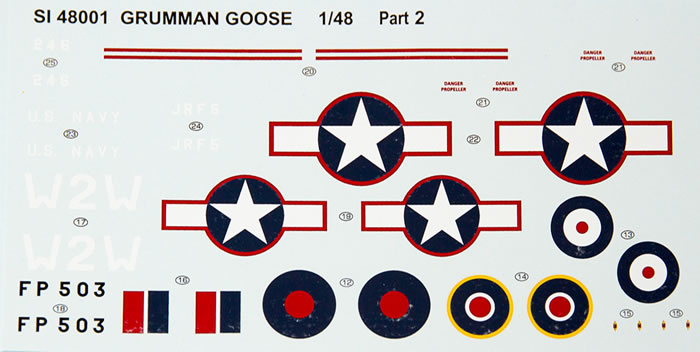
The decals feature perfect registration and rich colour but, in my case, suffered from some damage as the two sheets were stored one on top of the other without paper to prevent them adhering to each other.
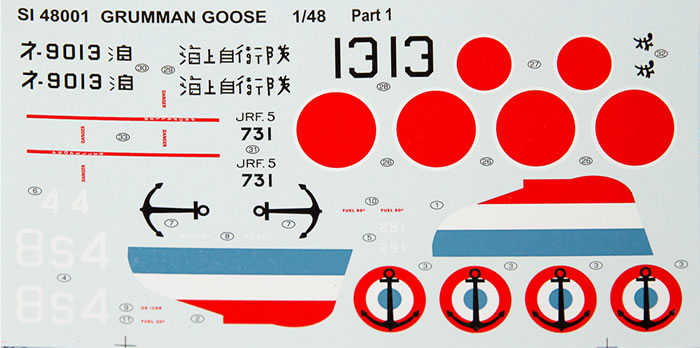
It is always difficult to tell until you’ve used them in anger, but the decals, particularly the RAF roundels, appear slightly thick to my eye. Given the beautiful surface detail, I think I would be inclined to try and source paint masks as an alternative to using the national insignia but expect the decals will perform well if required.
10 photographers of a built model included on the back of the box provide a useful guide to painting the interior and engine, and illustrate just how good the finished product can look.
Signifer’s 1/48 Goose appears accurate, features nice surface textures, including a beautifully restrained mix of engraved and raised surface detail, and detailed resin components. With care and careful test fitting, the Signifer JRF 5 should build to an excellent replica of Grumman’s iconic Goose.
Highly Recommended
Thanks to Signifer for the sample

Review Text & Images Copyright © 2016 by David Harmer
Page Created 5 April, 2016
Last updated
5 April, 2016
Back to HyperScale Main Page
Back to Reviews Page |
